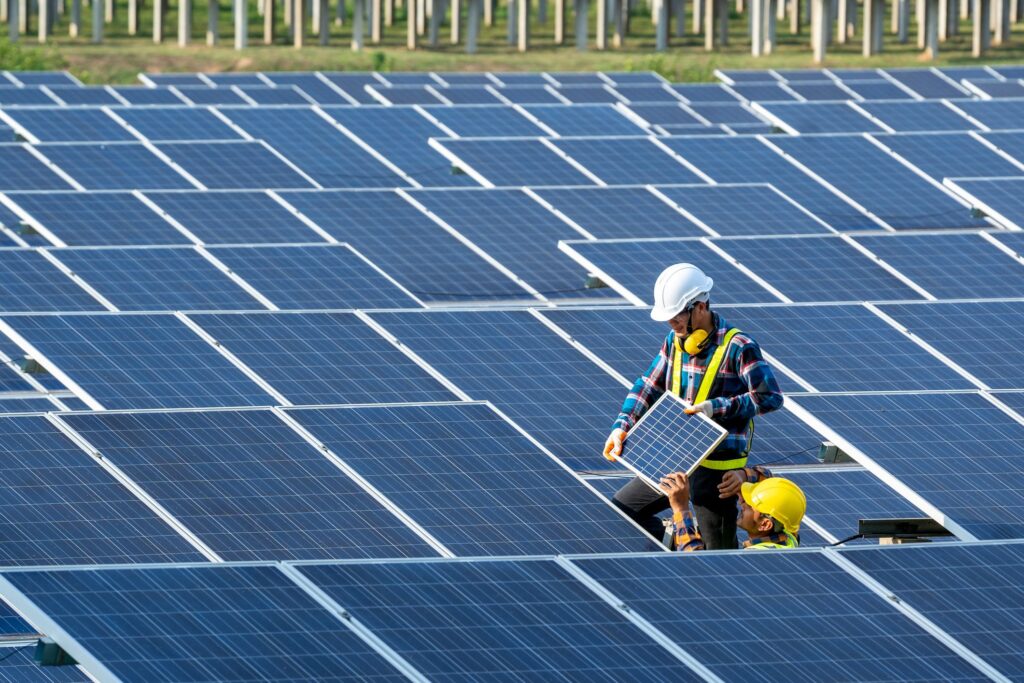When Steve and Janine Cathey started building their dream home over a year ago, each had an objective. For Janine, their home had to be child-friendly with ample room for their boys Seth (3) and Matthew (1) to move around and play. While Steve leaned in the same direction, he also wanted to build with commonly used materials like steel and concrete – and he wanted an eco-friendly home. In no time, they found the perfect location in the Waterfall Country and Lifestyle Estate in Kyalami, Johannesburg. ‘We couldn’t believe that there was this eco estate virtually a few kilometers from our urban cluster with 300 acres of open space – a fantastic lifestyle for families,’ says Steve. An engineer and project manager in the mining industry, Steve teamed up with M-Square Architectural Designs for the design of their home and building took exactly four months from earthworks to completion.
Pitch perfect
The key feature of the home is the single pitch roof design with a ‘lift’ in the center that breaks the skyline while assisting in the heating and cooling of the double volume section of the dwelling. To reach the 2.7m roof overhang on the front of the house that covers the 6m glass facade, the pitch of the roof had to slope towards the back of the house. The entire roof pitch consists of Inverted Box Rib sheeting with a deep, broad flute design that offers excellent drainage and optimum weight- bearing capabilities. This design has also increased the volume of the central living space, while the upstairs rooms are considerably smaller. ‘With the facade being mainly glass it also really brings the outdoors in and we absolutely love the 180o views,’ says Janine.
Solar Sense
By following the sun’s Inter-Tropical Convergence Zone with the required roof overhang design, the sun penetrates the house almost entirely in winter and provides full shade in the summer. Concrete slabs in the house have been over-designed to absorb the solar energy and heat up the house in winter. It’s been proven that a dense material such as mass concrete can store and radiate heat energy for up to three hours – so when the sun sets at 6 pm in the winter, the 250mm-thick concrete slabs in the house continue radiating heat up until at night.
Water cooler
For additional cooling purposes, a rain tank was installed at the back of the house with a solar panel-driven pump inside it that pumps a small amount of water onto the lower pitch of the roof and, with the aid of the IBR sheeting, causes evaporative cooling; this is especially well suited to climates where the air is hot and humidity is low and allows ‘free’ cooling of the house in summer while also doubling as a garden drip irrigation system from the roof.
Underfloor heating
An underfloor water heating system runs through the house and consists of 300m of 1/4inch piping that was laid prior to casting the top layers of flooring. A portion of this piping was installed inside the solar geyser, picking up the heat as it flows through the geyser’s pressure vessel; a 20W pump pumps the water through the system to heat the entire house.
Obstacles
The main obstacle in building this house was choosing the right materials for construction and making sure everything was as eco-friendly as possible. All in all, 12 tonnes of structural steel were used. ‘Steel is recyclable as opposed to cement which is rather harmful to the environment when one considers the manufacturing process,’ Steve explains. Mentis grating, also steel, was used as balustrading throughout the house. ‘This is generally used as flooring in manufacturing plants, but turned sideways it functions as visually pleasing balustrading which is, most importantly, also childproof,’ adds Steve.

